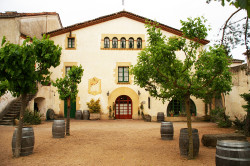 As we pulled up in front of Mas Macia it looked like a quaint little village within itself, on the beautiful grounds covered by the vineyards there is the old 13th Century Catalan house, a restaurant, a church and of course the winery and its cellars. The smell of the fresh-cut grass was refreshing as we stood in the sunlight looking over the 35 hectares of vineyards in prime position, close to the cellars. The charm of this place was in the small details, each the old doors painted bright green a stunning contrast from the golden building.
As we pulled up in front of Mas Macia it looked like a quaint little village within itself, on the beautiful grounds covered by the vineyards there is the old 13th Century Catalan house, a restaurant, a church and of course the winery and its cellars. The smell of the fresh-cut grass was refreshing as we stood in the sunlight looking over the 35 hectares of vineyards in prime position, close to the cellars. The charm of this place was in the small details, each the old doors painted bright green a stunning contrast from the golden building.
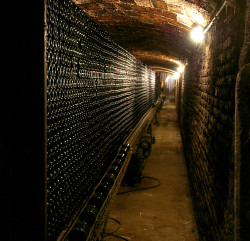 As the roller door slowly raised and revealed the old cellar it was like a step into the medieval underground, the tunnels were lit only slightly and we could see through the shadows the hand-built stone walls. Each of the thousands of bottles lying peacefully yet I felt as though they were living characters, the fermenting cultures inside doing their work to create these luscious cavas.
As the roller door slowly raised and revealed the old cellar it was like a step into the medieval underground, the tunnels were lit only slightly and we could see through the shadows the hand-built stone walls. Each of the thousands of bottles lying peacefully yet I felt as though they were living characters, the fermenting cultures inside doing their work to create these luscious cavas.
Like walking onto the stage of a theatre set centuries ago I learnt about a life lived by the ancestors of this family, all of our modern commodities were here just in a very different form. The rooms were lined by the dowry cases of the families’ young girls and the walls covered by artifacts which are a mystery to this day.
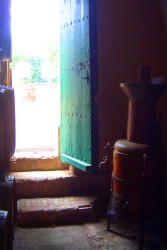
I heard the story of a certificate framed between two portraits on one of the bedroom walls, these were cousins who were awarded special permission to marry just because their families owned the most favorable fields. I was also shown the two seats which sat either side of the front window where mother and daughter would sit so the conversation of the potential husband could be heard by both. In fact the inside of this house had endless remarkable stories I could have listened to for hours.
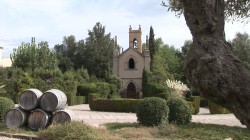
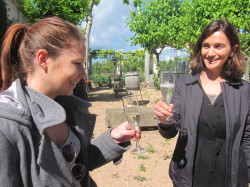
To end my visit we enjoyed the perfect setting for a tasting of the Bohigas Cava Brut 2010 (made from the grape varieties: Macabeo, Xarel.lo & Parellada) in front of the Masia, a true taste of hundreds of years of family tradition.
Get your free copy of the 50 Great Cava eBook>>
50 Great Cava wine tastng tour>>
Emma Combey
0 Comments